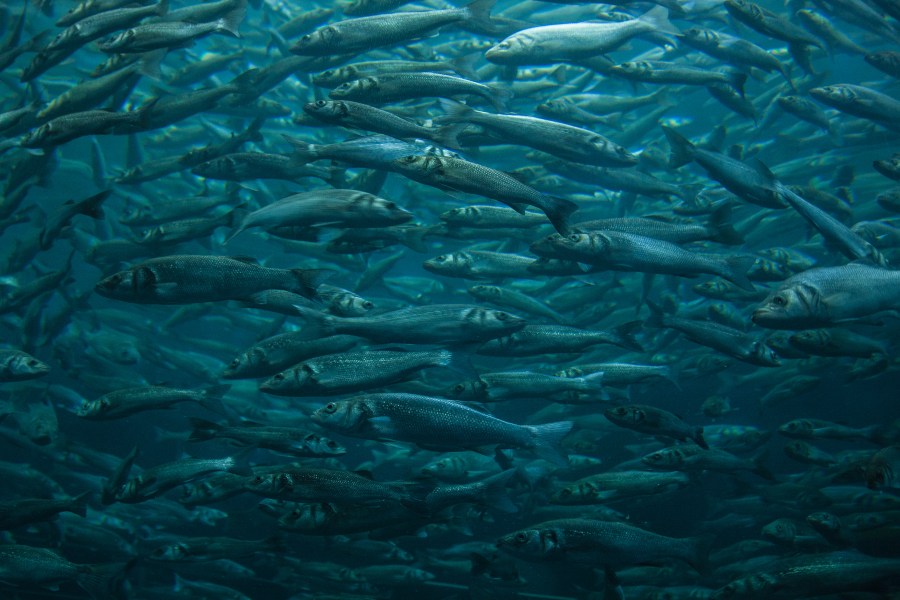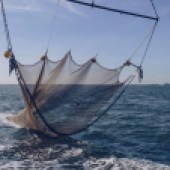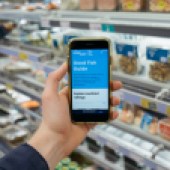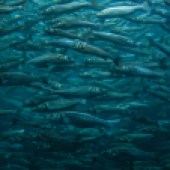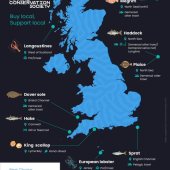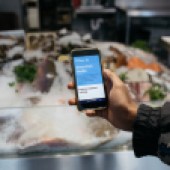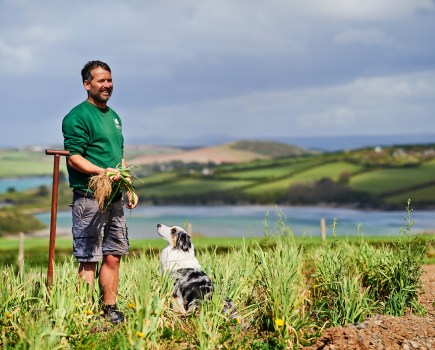“If food waste were a country, it would be the third largest emitter of greenhouse gases on the planet. Freezing fish extends its shelf life and makes it easy to knock up a delicious, sustainable seafood dinner.” New sustainability ratings show affordable, ocean-friendly seafood options are possible – handy at a time when household budgets are under strain, writes VICTORIA SCARLETT.
The Marine Conservation Society’s Good Fish Guide is the charity’s flagship tool for identifying sustainable seafood. The Guide and its app use a simple traffic light system to help consumers and businesses make sustainable seafood choices depending on where and how a species is caught or farmed.
Covering seafood sold or produced in the UK, green are the ‘Best Choice’ most sustainable options, amber is an okay choice but improvements are needed, and red indicates unsustainable ‘Fish to Avoid’.
Updated biannually, ratings are carefully researched and rigorously reviewed by scientists at the charity using a transparent process and publicly available methodology.
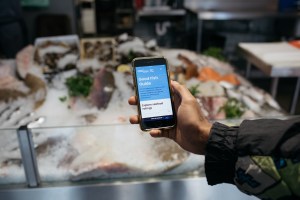
The Seafood Checker helps shoppers find fish’s sustainability rating.
Key findings from the latest Guide are:
- Seafood is one of the first things to drop off consumers’ shopping lists when purse strings tighten, but that needn’t be the case. Affordable and sustainable seafood options are possible, especially when it comes to tinned or frozen seafood.
- Tinned fish goes a long way, providing a budget-friendly meal with plenty of flavour.
- The Good Fish Guide’s new tool, the Seafood Checker, helps shoppers find a sustainability rating. Asking questions such as ‘where was your fish caught or farmed’ and ‘does your fish have an ecolabel’. You can try the new tool here: www.goodfishguide.org/seafood-checker.
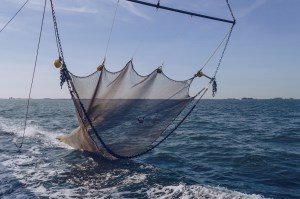
The Marine Conservation Society campaigns for clean seas and beaches, sustainable fisheries, and protection of marine life.
The Marine Conservation Society is calling on the governments of the UK to deliver better fisheries management, including improving data collection, so we all have a clearer picture of the state of our seas, and the sustainability of seafood.
Jack Clarke, Sustainable Seafood Advocate at the Marine Conservation Society said: “Tinned fish is an ocean friendly, store cupboard staple. There are certified sustainable options for sardines, anchovies and tuna, all of which could create the base for a thrifty midweek meal. North Sea and MSC-certified herring stay on the green list and are also a great choice, available smoked or tinned.
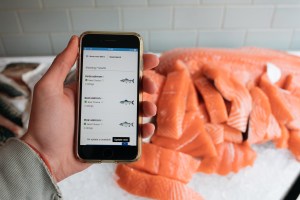
The Seafood Checker helps shoppers find fish’s sustainability rating.
“Most major retailers offer green rated options for breaded fish, from fingers to fillets. Frozen fish is a great option for your wallet and the planet. If food waste were a country, it would be the third biggest emitter of greenhouse gases on the planet. Freezing fish extends its shelf life and makes it easy to knock up a delicious, sustainable seafood dinner.”
On the latest ratings update, Charlotte Coombes, Good Fish Guide Manager at the Marine Conservation Society, explained: “This season’s ratings update shows few improvements to ratings for wild-caught seafood. There were only 16 improvements out of 177 reviewed.
“Many of the ratings on the Good Fish Guide are negatively affected by a lack of data. If we knew more about what was going on at sea, measures could be put in place to protect our marine wildlife. We need the governments of the UK to pay immediate attention to our seas, so that we can have healthy oceans and a sustainable fishing industry.”
Dawn Purchase, Aquaculture Programme Manager at the MSC added: “It’s a common misconception that farmed seafood is not as responsible a choice as its wild-caught counterpart. However, this season’s update to the Good Fish Guide has shown that for some species it is often a more ocean-friendly option.”
The Good Fish Guide has around 650 ratings for over 100 different species of fish and shellfish. A proportion of these ratings are reviewed during each update, which happens in April and October. Each rating is specific to a species, living in a certain area, caught or farmed by a certain method, and, if applicable, certified to a recognised standard.
See all the latest ratings and download the Guide at goodfishguide.org.
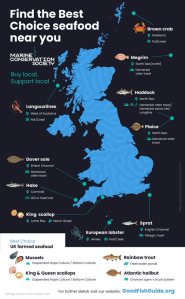
The Marine Conservation Society provides information and guidance on many aspects of marine conservation.
CAMPAIGING FOR CLEANER SEAS
The Marine Conservation Society campaigns for clean seas and beaches, sustainable fisheries, and protection of marine life. Through education, community involvement and collaboration, the charity raises awareness of the many threats that face our seas and promotes individual, industry and government action to protect the marine environment.
The Marine Conservation Society provides information and guidance on many aspects of marine conservation and produces the Good Fish Guide as well as involving thousands of volunteers in projects and surveys such as Beachwatch. www.mcsuk.org
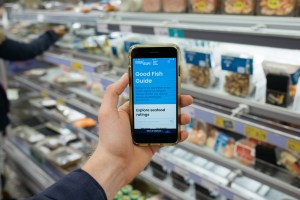
The Seafood Checker helps shoppers find fish’s sustainability rating.
THE GOOD AND BAD
The good – Good Fish Guide ratings show some promising signs:
- Most Alaska pollock, often found in fish fingers, stays a Best Choice. Look out for those that are certified to MSC standards for the most sustainable options.
- Icelandic cod also stays a Best Choice, with healthy population sizes and reasonable limits in place on how many can be caught. Found fresh or frozen in most supermarkets.
- Farmed mussels – a pocket and ocean-friendly option – remain on the green list. Find them in the fresh fish aisle or on the counter at supermarkets, and even tinned or jarred.
- Other tinned favourites, herring, remain a Best Choice if caught in the North Sea or MSC certified. Anchovies, are a Best Choice if caught in the Bay of Biscay and tuna is a Best Choice if albacore or skipjack and caught by pole & line.
The bad – what to avoid according to the Good Fish Guide
- UK cod stocks are still in a very bad way, with no effective recovery plan in place. UK cod remains on the Fish to Avoid list.
- Wild-caught Atlantic halibut stays red rated and is on the IUCN (International Union for Conservation of Nature) Red List of threatened species. However, look out for GLOBALG.A.P. certified Norwegian farmed halibut which makes its way onto the green list from amber due to stricter requirements for sourcing fish feed.
- Wild-caught seabass remains amber as wild populations are slowly recovering from critically low levels. The increase is positive, but they haven’t reached sustainable levels yet. Farmed seabass can be a better option.
- Discover great recipes and top tips on how to cook all kinds of seafood here: https://tinyurl.com/4w3awm3a
If you want to treat yourself to some seafood the sustainable way, read our 10 best sustainable seafood restaurants here.

